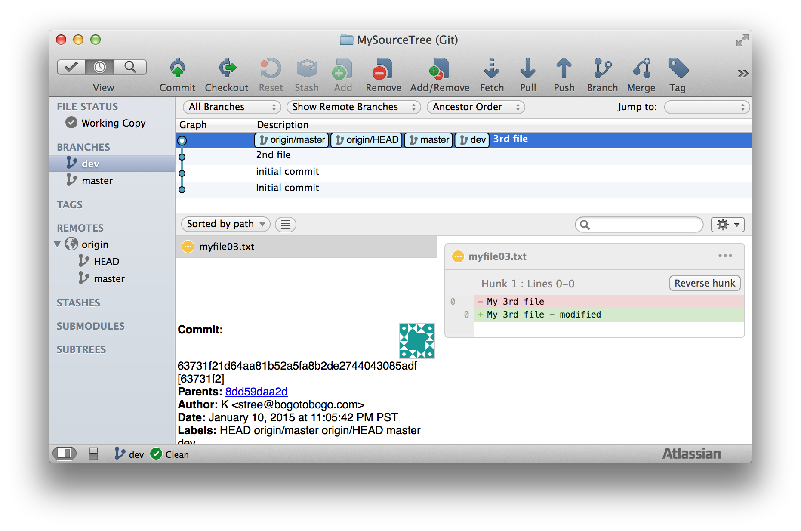

We are not adding any unnecessary commits in this scenario. I resolved this problem by the following approach. And after that, immediately commit those changes:Īn alternative is to do a -hard reset on branch A to HEAD~1, and to simply checkout out a new branch from commit b - the latest commit.The problem is that these 13 commits are now supposed to go on a new. Since it may take some time, it is best to move these changes into a new branch to isolate them.
Git create new branch and move changes how to#
So all 13 only exist on my local machine. To learn how to create a local branch in the repository. (use 'git push' to publish your local commits) nothing to commit, working directory clean.

Now that you are here, simply create a new branch: git status On branch master Your branch is ahead of 'origin/master' by 13 commits.HEAD~1 means that you are resetting to a commit that is exactly one commit behind where you are right now. git add deletedFile1 git add deletedFile2. Supposing you are at the master branch: git checkout test git add. You dont lose your uncommited changes when moving to another branch. New Branches Git checkout works hand-in-hand with git branch.The git branch command can be used to create a new branch. In order to do this, we must use a git reset hard with a -– mixed flag. You can just checkout to the test branch and then commit. The above example demonstrates how to view a list of available branches by executing the git branch command, and switch to a specified branch, in this case, the featureinprogressbranch.



 0 kommentar(er)
0 kommentar(er)
